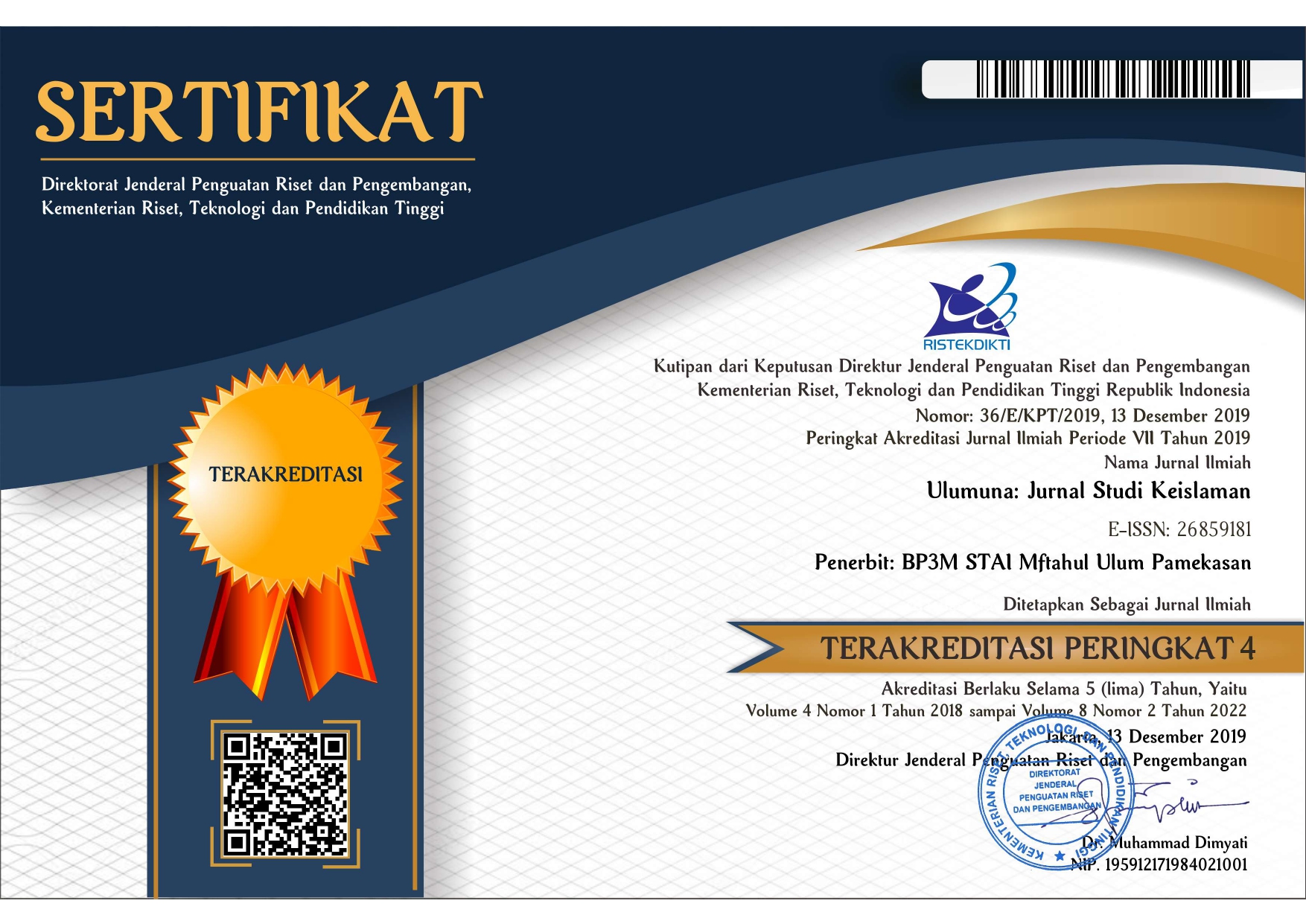Representation of the Concept of HabluminaAllah and Habluminannas in the Philosophy of the Thousand Torch Udeng of the Samin Community of Margomulyo, Bojonegoro
DOI:
https://doi.org/10.36420/ju.v10i2.8007Abstract
This article examines the philosophical meaning of the use of udeng Seribu Obor in the Samin community as a symbol that represents the concept of habluminaAllah (human relationship with God) and habluminannas (human relationship with others). This research uses a descriptive qualitative approach with the methods of observation, in-depth interviews, and documentation of community leaders and Samin cultural actors. The results showed that udeng Seribu Obor is not just a cultural attribute, but a representation of the values of spirituality, simplicity, and social solidarity that have been deeply embedded in the lives of the Samin people. The concept of habluminaAllah is reflected in submission to the values of kindness and honesty as a form of worship, while habluminannas is realized through mutual cooperation, tolerance, and peace between citizens. The philosophy of udeng Seribu Obor is a concrete manifestation of the interrelation of religious and social values in local traditions, affirmation of moral and spiritual commitment to the noble teachings of Samin, also contains deep spiritual and social dimensions and also as a medium that strengthens community identity and transforms noble values into daily life practices.Downloads
Published
2024-12-30
How to Cite
Reza Adelia Luthfiana Azizah, M. Lutfi Mustofa, & Muhammad In’am Esha. (2024). Representation of the Concept of HabluminaAllah and Habluminannas in the Philosophy of the Thousand Torch Udeng of the Samin Community of Margomulyo, Bojonegoro. Ulumuna: Jurnal Studi Keislaman, 10(2), 220–244. https://doi.org/10.36420/ju.v10i2.8007
Issue
Section
Articles
License
Copyright (c) 2025 Reza Adelia Luthfiana Azizah, M. Lutfi Mustofa, Muhammad In’am Esha

This work is licensed under a Creative Commons Attribution-ShareAlike 4.0 International License.
Jurnal ini terbuka untuk umun dan bisa digunakan untuk kepentingan ilmiah lainnyaÂ






